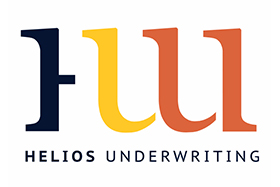During recent tariff-driven market turbulence, European insurers have demonstrated resilience that is indicative of the sector’s increased structural stability and risk management on the forward curve. In analysis by Autonomous Research, the European insurance industry—historically viewed as cyclical and macro-shock sensitive—has weathered the volatility with unexpected stability.
Tariff Tensions Spark Market Jitters For European Insurers
The latest bout of volatility in the equity markets was initiated by a surge in trade tensions between the EU and some of its most important global partners, especially the United States and China. Following retaliatory tariff increases by both parties, markets saw across-the-board selling, with the financials taking the maximum hit in the first few days.
Insurance equities, traditionally regarded as being sensitive to interest rate movement and economic risk, declined along with other financials initially. However, the fall was comparatively limited and, more importantly, ephemeral.
A More Resilient Sector For European Insurers
Autonomous attributes this resilience to certain significant reasons:
1. Improved Capital Buffers
European insurers have spent the last decade rebuilding capital buffers to Solvency II levels. This has built more resilient balance sheets and more capacity to absorb external shocks.
2. Diversified Investment Strategies
Insurers have shifted from fixed-income-heavy portfolios to more diversified strategies, including infrastructure, private equity, and real estate. This diversification helped to reduce the impact of bond market volatility.
3. Stable Underwriting Margins
Underwriting profitability, particularly in life and health insurance, has improved consistently. Insurers have reinforced pricing discipline and retreated from unprofitable lines, providing a more stable earnings base.
4. Digital Transformation and Operational Efficiency
Years of investment in online platforms and automation are finally paying off. Leaner operations have generated cost efficiencies and improved customer retention, helping to reduce earnings volatility in times of adversity.
Market Reaction vs. Fundamentals For European Insurers
The muted reaction of insurance shares to the broader financial index suggests that investors are beginning to distinguish between structural risk and cyclical noise. Headline risk is undoubtedly present, however, if and when tariffs rise further, but the fundamentals in the business appear strong.
Autonomous points out insurers themselves actually made use of the market correction to repurchase shares at discount valuations, an indicator of confidence in their balance sheet and long-term strategy.
Looking Ahead
While European insurers are not exempt from geopolitical shocks, the recent market sell-off precipitated by tariffs offered a live stress test—and most passed. With core solvency ratios intact and underwriting performance intact, the industry enters the next phase of market uncertainty with restrained resilience.
Investors, analysts, and regulators would be justified in taking this episode as further evidence that the European insurance industry has matured into a more robust, strategically driven corner of the financial system.




